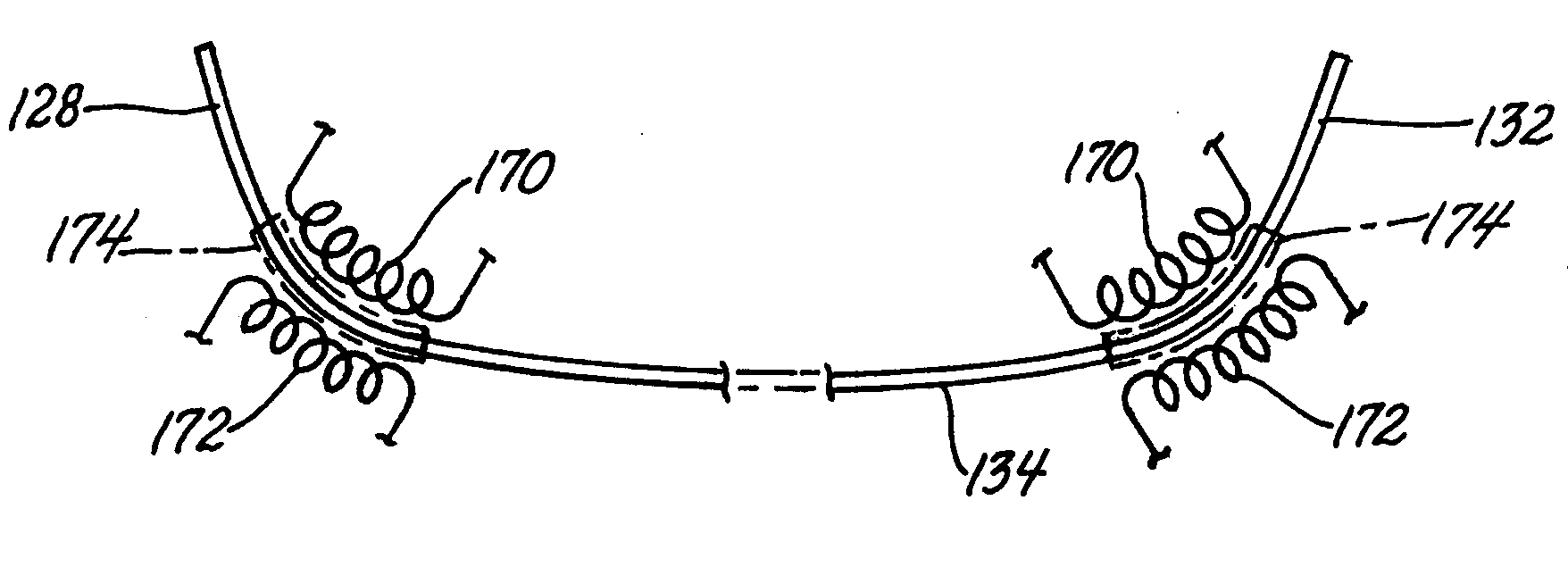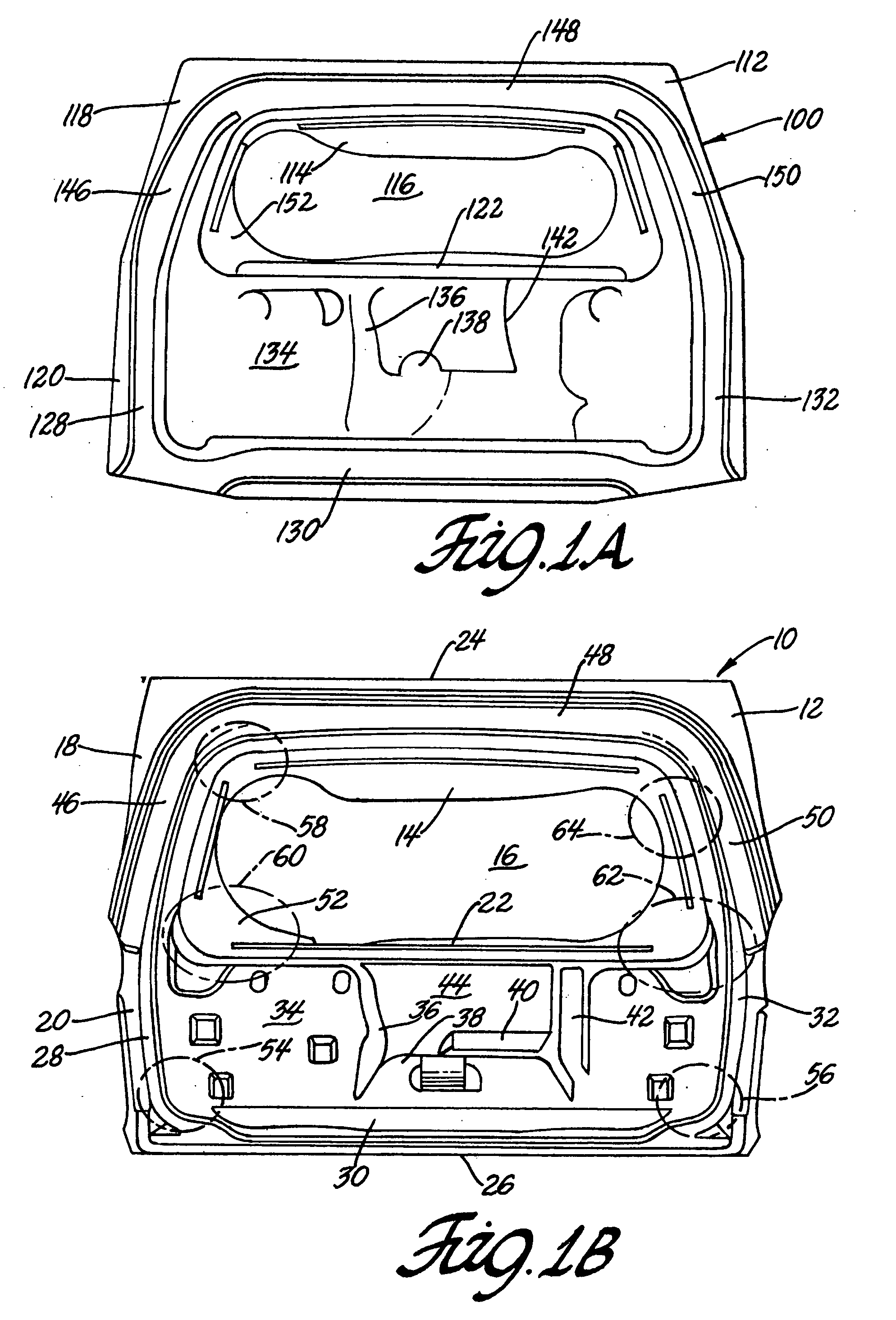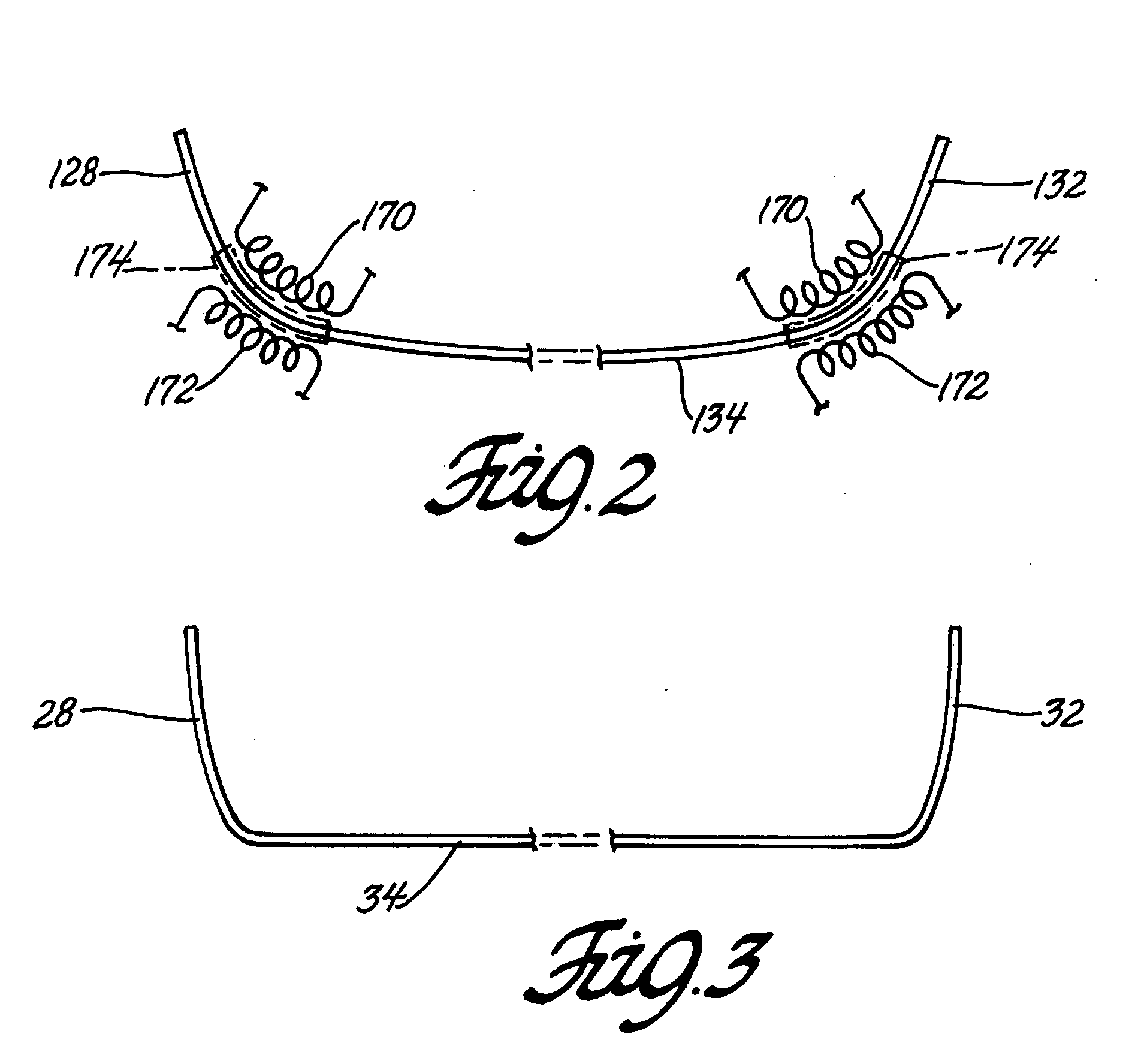Method for production of stamped sheet metal panels
a technology of sheet metal panels and stamping, which is applied in the direction of metal-working equipment, manufacturing tools, shaping tools, etc., can solve the problems of not being necessary or desirable to anneal the entire preform sheet, and achieve the effect of quick product shape, reduced heat treatment equipment size and reduced time required
- Summary
- Abstract
- Description
- Claims
- Application Information
AI Technical Summary
Benefits of technology
Problems solved by technology
Method used
Image
Examples
Embodiment Construction
[0018] Automotive vehicle body panels such as hoods have been stamped using commercial aluminum alloy sheet materials such as Aluminum Association alloys (AA) 5182 and 5754. AA 5182 has a nominal composition, by weight, of 4.50% magnesium, 0.35% manganese 0.20% silicon, 0.15% copper, 0.10% chromium, 0.25% zinc and the balance substantially aluminum. AA5754 has a nominal composition, by weight, of 2.7% magnesium, 0.80% manganese, 0.12% chromium and the balance substantially aluminum. These materials are cast, hot rolled and cold rolled to a desired sheet thickness, typically 1 to 2.5 mm, and annealed or tempered to recrystallize the work strained microstructure so that the coiled sheet material is in the most formable state (O temper condition) obtainable from the alloy composition.
[0019] Generally, aluminum sheet alloys are not as formable as available low carbon steel sheet alloys. Designers of automobiles now seek body panel surfaces and configurations with relatively deep pocket...
PUM
| Property | Measurement | Unit |
|---|---|---|
| Time | aaaaa | aaaaa |
| Strain point | aaaaa | aaaaa |
Abstract
Description
Claims
Application Information
 Login to View More
Login to View More - R&D
- Intellectual Property
- Life Sciences
- Materials
- Tech Scout
- Unparalleled Data Quality
- Higher Quality Content
- 60% Fewer Hallucinations
Browse by: Latest US Patents, China's latest patents, Technical Efficacy Thesaurus, Application Domain, Technology Topic, Popular Technical Reports.
© 2025 PatSnap. All rights reserved.Legal|Privacy policy|Modern Slavery Act Transparency Statement|Sitemap|About US| Contact US: help@patsnap.com



